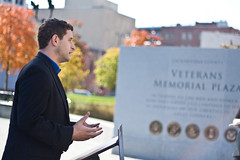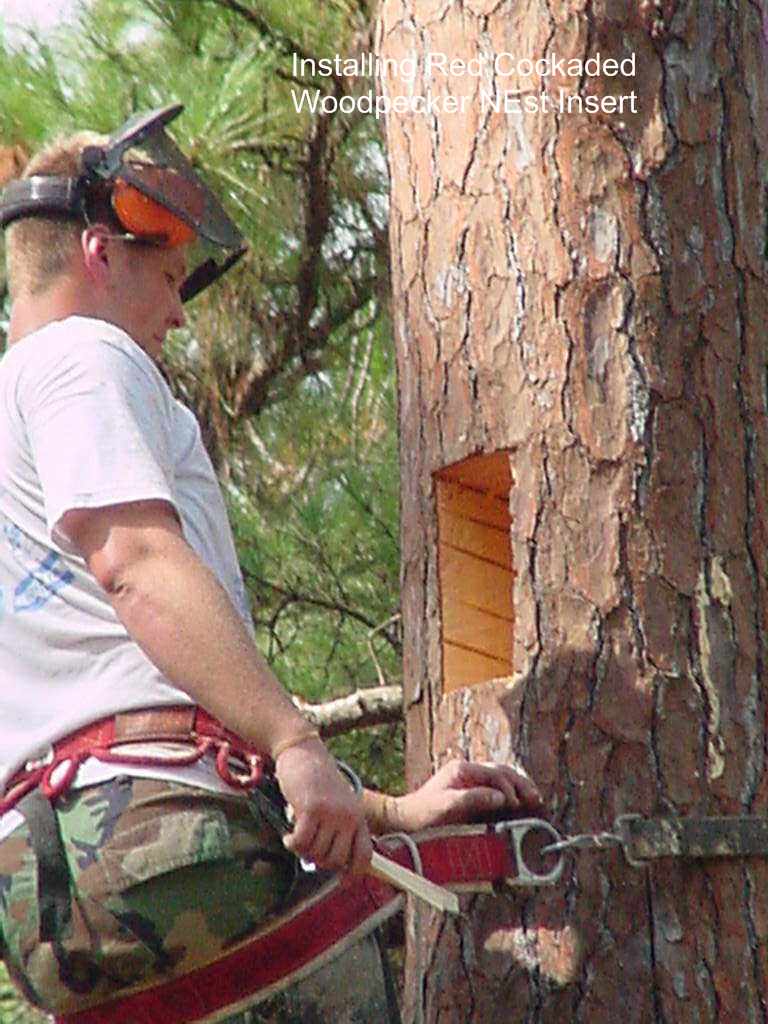 Mike Breen speaking in Scranton, PA(photo credit: Operation Free)
Mike Breen speaking in Scranton, PA(photo credit: Operation Free)After Army tours in Iraq and Afghanistan, Captain Mike Breen is on a new mission—seeking to convince fellow Americans that our addiction to fuel from Middle Eastern oil wells is a dire threat to our soldiers in combat and our security at home. Breen, a former infantry platoon leader, contends that the shadowy insurgents our troops have been battling in two military campaigns are largely financed by oil-rich Islamic groups that profit from America’s insatiable demand for gasoline but oppose our military actions in Islamic nations.
“When you pay at the pump… we are literally putting the bullets in the magazines that are being fired back at our guys in Afghanistan and Iraq,” Breen said recently during a bus tour sponsored by Operation Free, a coalition of veterans and national security groups working to counter what they see as a growing threat from dependence on foreign oil supplies. Citing military experiences, Breen and his buddies are determined to add red, white and blue to the green banner of the environmental movement.
“We don’t have to make a choice between our lifestyle and an independent energy policy that promotes a clean energy environment and keeps us safe,” he added, in comments reported by the
Times Leader of Scranton, PA.
Breen, an ROTC graduate who is now a law student at Yale University, was part of the Veterans for American Power bus tour that traveled to dozens of communities in 21 states last month.
“As we spoke in Pennsylvania’s steel towns and rolled through the wooded hills of New Hampshire, I began to realize just how ready most people were to hear what we had to say,” Breen reflected in a blog on the Operation Free web site. “In small towns and state capitols, Americans young and old seemed to intuitively understand that dependence on foreign oil and pollution that threatens our climate both pose a danger to our security and way of life. More importantly, they seemed ready and eager to stand up and do something about it.
“In Pittsburg, the leaders of a local union showed us a training program that prepares workers for a renewable energy economy. In New Hampshire, state legislators explained how weatherizing homes in the state could create jobs. In Maine, Bowdoin College was packed with a new generation of student leaders ready to commit to putting America’s energy future back in American hands,” he continued.
“As the bus rolled on, I watched with humility and excitement as my fellow veterans mastered the skills of a new kind of service. Glenn Kunkel, a decorated Marine rifleman, spoke eloquently of wind farms as the victory gardens of a new greatest generation. Robin Eckstein told hushed town meetings of the perils of logistical convoys in Iraq, dodging insurgent attacks to supply petroleum for Army generators. Andrew Campbell brought a crowd of his fellow Mainers to their feet at our last event, with a call to stop funding both sides of the war through foreign oil.”
Meanwhile, a second bus-load of energized vets was touring Midwestern and Southern states. Rolling into Florida, the group’s “first stop was in the American Legion Hall Post 6 in Deland, FL,” noted Rocky Kistner on a campaign blog. “In a room appointed with military memorabilia and a wall-mounted M16, the vets mingled with fellow veterans of wars dating back to World War II. Many in the room agreed with their message: we need to find other sources of clean energy here at home to keep American armed service members from having to deploy and fight in wars over oil and other energy sources. It’s the best way to avoid future conflicts fueled by the increasing threats of climate change.”
Besides public education, a major focus of the bus tour was to build support for a bill in Congress, the Clean Energy Jobs and American Power Act. That bill was released by the Senate Environment and Public Works Committee earlier this month for consideration by the full Senate. Introduced by Senators John Kerry (D-Mass.), chairman of the Foreign Relations Committee, and Barbara Boxer (D-Calif.), chairwoman of the Committee on Environment and Public Works, the bill aims to “cut carbon pollution and stimulate the economy by creating millions of jobs in the clean energy sector,” according to a Senate press release. A companion House bill was approved in June.
"This is a security bill that puts Americans back in charge of our energy future and makes it clear that we will combat global climate change with American ingenuity," said Kerry, the former presidential candidate and a Vietnam veteran long active on environmental issues. "Our health, our security, our economy, our environment, all demand we reinvent the way America uses energy. Our addiction to foreign oil hurts our economy, helps our enemies and risks our security.”
Fueling this bill and the concerns of vets on the bus tour were national security issues raised in federally funded studies and Congressional testimony by retired senior military officers.
“Global climate change presents a serious national security threat which could impact Americans at home, impact United States military operations and heighten global tensions, according to a new study released by a blue-ribbon panel of retired admirals and generals from all branches of the armed services,” states a summary of “National Security and the Threat of Climate Change,” a 2007 study by the Center for Naval Analyses, based on research by nearly a dozen admirals and generals.
“Climate change is occurring at a much faster pace than the scientists previously thought it could,” noted General Gordon Sullivan, a former Army Chief of Staff. “Military professionals are accustomed to making decisions during times of uncertainty… Even if you don’t have complete information, you still need to take action. Waiting for 100 percent certainty during a crisis can be disastrous… The US has the responsibility to lead [on global climate change]. If we don’t make changes, then others won’t.”
Noting these concerns, support for addressing these issues has come from some Republicans as well as Democrats.
“As a conservative S.C. senator, a Marine and former chairman of President Ronald Reagan’s campaigns in South Carolina, I have always regarded national defense and economic development as top priorities,” state Senator John Courson wrote in a recent guest column in the Orangeburg (SC)
Times and Democrat. “America’s dependence on foreign oil hurts our economy, helps our enemies and puts our security at risk. Together, we can protect our national security, keep our brave men and women out of harm’s way, strengthen our economy and take control of our energy future.”
Changing ingrained attitudes, and countering powerful economic interests, remains an uphill struggle. Courson was coming to the defense of U.S. Senator Lindsay Graham (R-SC), who is under fierce attack by power utility groups for backing proposed legislative changes on energy use. Yet Captain Breen remains upbeat. “The bus tour may be over, but the mission continues,” he wrote. “I’m looking forward to reuniting with my fellow Operation Free veterans, and working together to meet the great challenge of our generation.”
For more information:
Mike Brean: Why I'm Fighting for Clean Energy Vets have energy messageNational Security and the Threat of Climate ChangeKerry, Boxer Introduce Clean Energy Jobs and American Power ActForeign oil puts our security at risk









